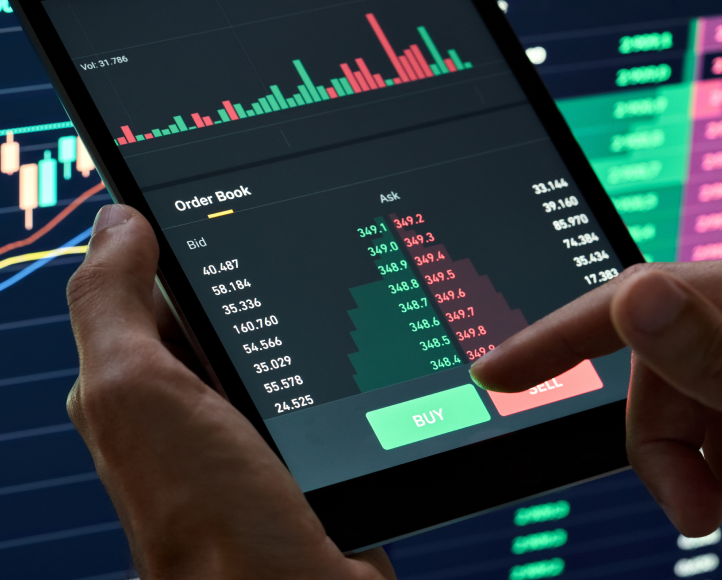
Mastering Trading Crypto Charts: Your Guide to Successful Trading
In the ever-evolving world of cryptocurrency, traders often find themselves sifting through a myriad of data to make informed decisions. One of the most critical components in this process is the art of reading and analyzing trading crypto charts. By understanding these charts, traders can better predict market movements and make strategic decisions. For those looking to enhance their trading skills, we present an in-depth look into the world of crypto charts, technical analysis, and effective trading strategies.
Additionally, if you’re in search of useful online resources, you can visit Trading Crypto Charts https://www.smartcdripper.com/website-list-591/ for various helpful websites.
Understanding Crypto Charts
At its core, a trading crypto chart displays historical price movements of a cryptocurrency over a specified time frame. These charts are crucial for traders as they visually represent market trends, allowing for effective analysis. The most common types of charts used in crypto trading are line charts, bar charts, and candlestick charts.
Line Charts
Line charts are the simplest form of price representation, connecting closing prices over a set period. They provide a clear visual representation of price movements, making it easy to see trends over time. However, they lack the detail found in other chart types, which can be a limitation for advanced traders seeking specific price action insights.
Bar Charts
Bar charts add more information than line charts by displaying the open, high, low, and close (OHLC) prices for a given time period. Each vertical line (or “bar”) represents the price range, while the horizontal dashes indicate the opening and closing prices. This additional detail enables traders to assess the volatility and price action more effectively.
Candlestick Charts
Candlestick charts have gained popularity among traders for their detailed information and clear visualization of market sentiment. Each candlestick represents a specific time interval, displaying the open, high, low, and close prices. The body of the candlestick indicates the price movement, with the color representing whether the price has moved up (bullish) or down (bearish). The “wicks” on either end provide insight into price extremes during that time period.
Technical Analysis: A Trader’s Best Friend
Technical analysis (TA) is the practice of evaluating market behavior based on historical price movements. It involves using trading crypto charts in conjunction with various indicators and patterns to forecast future price movements. Here are some of the most essential aspects of technical analysis:
Chart Patterns
Recognizing chart patterns is a fundamental skill for any trader. Popular patterns include head and shoulders, triangles, and flags. Understanding these formations can provide insight into potential trend reversals or continuations, allowing traders to position themselves accordingly.

Indicators
Indicators are mathematical calculations based on price and volume that help traders make informed decisions. Some of the most widely used indicators in crypto trading include:
- Moving Averages: Used to identify trends by smoothing out price data over a specific period.
- Relative Strength Index (RSI): Measures the speed and change of price movements to identify overbought or oversold conditions.
- MACD (Moving Average Convergence Divergence): A trend-following momentum indicator that shows the relationship between two moving averages.
Strategies for Successful Trading
Utilizing trading crypto charts effectively requires a solid trading strategy that incorporates technical analysis. Here are some strategies that have proven successful for many traders:
Day Trading
Day trading involves making multiple trades within a single day to capitalize on short-term price movements. Traders rely heavily on charts to identify entry and exit points during the day. This strategy requires discipline, quick decision-making, and a comprehensive understanding of market trends.
Swing Trading
Swing trading is a medium-term strategy where traders hold positions for days or weeks. This approach allows traders to capitalize on price swings while utilizing trading crypto charts to identify promising entry and exit points based on technical analysis.
Position Trading
Position trading is a long-term strategy where traders hold assets for extended periods, often based on fundamental analysis. Even though it is less focused on short-term price movements, traders still use charts to identify optimal entry points that align with their long-term investment goals.
Conclusion
Mastering trading crypto charts is vital for anyone looking to succeed in the cryptocurrency market. Understanding different types of charts and how to interpret them will provide a solid foundation for conducting technical analysis. Incorporating various strategies and indicators will further enhance trading effectiveness. As with any form of investment, continual education and practice are crucial. By dedicating time and effort to analyzing charts and honing trading skills, you can navigate the volatile world of cryptocurrencies with greater confidence and strategy.
Remember, in the world of crypto trading, knowledge is power. Continue to educate yourself, utilize resources, and refine your strategies as you embark on your trading journey.